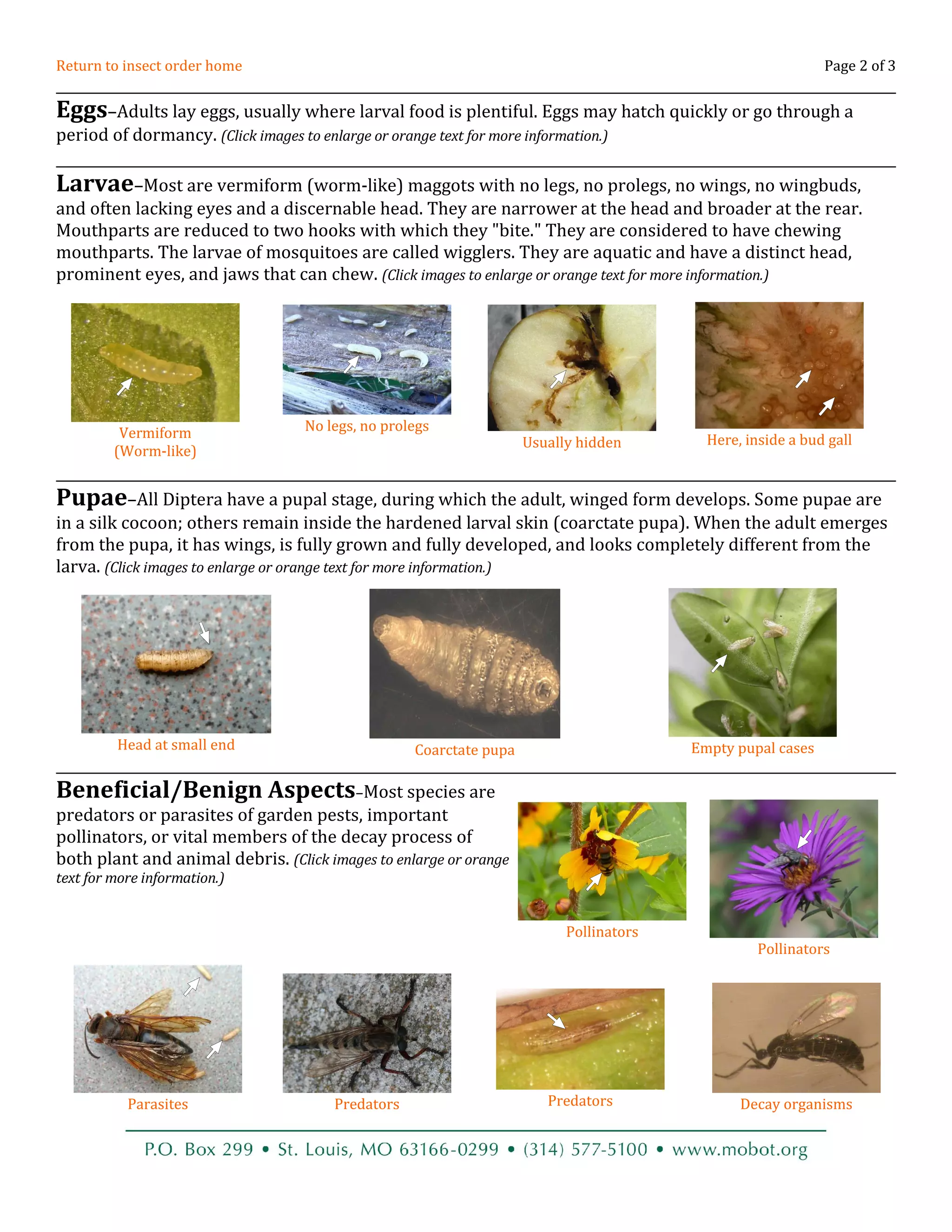The document summarizes key information about flies in the insect order Diptera. It notes that Diptera have one pair of wings, with the hindwings reduced to halteres. They undergo complete metamorphosis from egg to larva to pupa to adult. As adults, they are usually strong fliers and have large, multifaceted eyes. The order is divided into the suborders Nematocera and Brachycera. Larvae generally lack legs and have chewing mouthparts, while adults feed on liquids and some transmit diseases. Both beneficial and damaging species are discussed.


